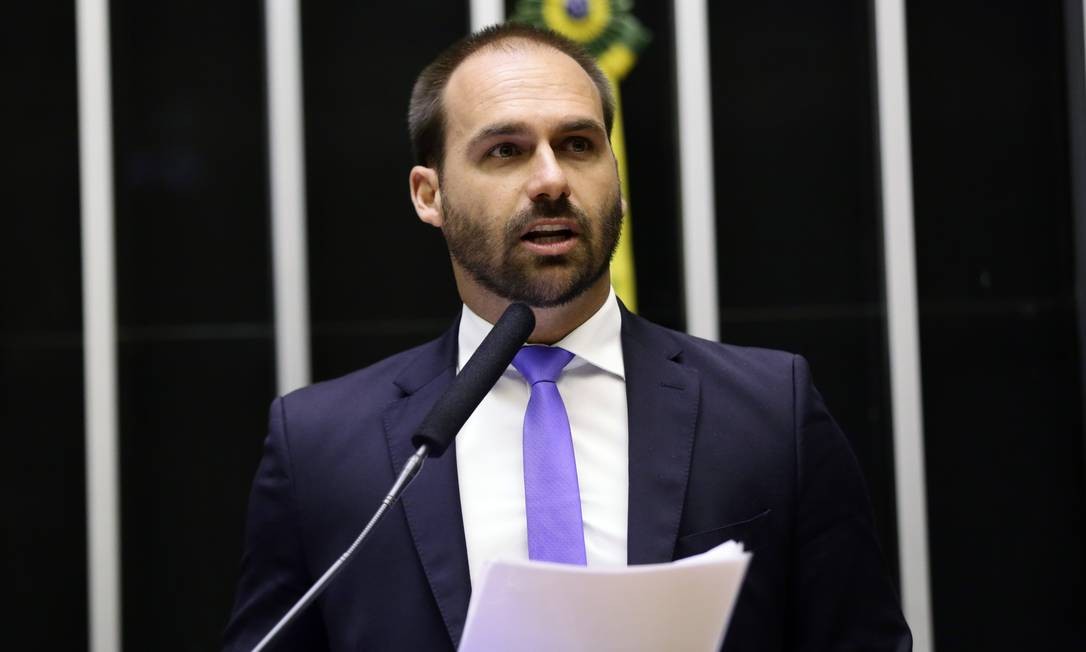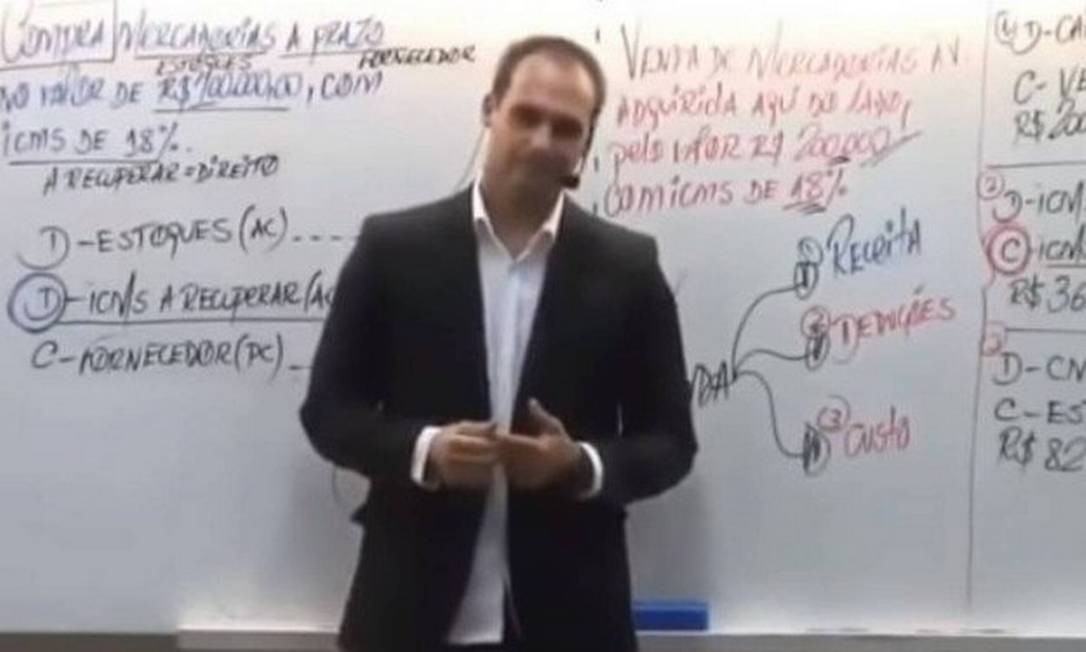A Farewell to Arms . . . Control
Carnegie Endowment for International Peace, April 2018
For more than half a century, nuclear arms control has been a key element of the bilateral relationship between the United States and the Soviet Union, now Russia.1Throughout most of the Cold War, it played an especially important role as a tool for managing the arms race, as a platform for communications between the two superpowers, and as a barometer of not only their bilateral relations but also the overall global stability and security environment due to their outsize presence on the world stage. When U.S.-Soviet relations underwent particularly severe strains, arms control could even act as a surrogate for the entire relationship.
However, the end of the Cold War has had a dual and contradictory effect on arms control: On the one hand, it made possible a number of truly breakthrough arms control agreements that exceeded even the most ambitious proposals of the previous era. On the other hand, the end of the political and ideological standoff between the United States and Russia resulted in a much more benign relationship, thereby diminishing fears of nuclear confrontation and the need for arms control to regulate the arms race.
The benign phase ended after Russia’s 2014 annexation of Crimea and its unleashing of an undeclared war in eastern Ukraine—yet there is no new momentum in the arms control process. To the contrary, the breakdown in U.S.-Russian relations, aggravated by Russian interference in the 2016 U.S. presidential election, has effectively ruled out the possibility of new agreements and dimmed prospects for saving the existing arms control structure, which is already experiencing severe strains following
Russia’s suspension of its participation in the Conventional Armed Forces in Europe (CFE) Treaty and reported violations of the
Intermediate-Range Nuclear Forces (INF) Treaty. Aside from political factors, the perilous state of U.S.-Russian arms control is a consequence of changing strategic factors, which include the development of new technologies and geopolitical transitions that raise doubts about the relevance of the existing arms control structure and whether both sides should maintain it.
The consequences of the end of arms control—should it come to that—are not easy to predict. In addition to the loss of a critical tool to regulate the strategic nuclear balance between Washington and Moscow, it could lead to a return to a situation not unlike that in which the Soviet Union and the United States were during the 1950s, with each side pursuing its own programs with little regard to considerations of strategic stability.
But that would be only one potential consequence. There could be others. For example, the end of U.S.-Russian arms control could impact the nuclear relationship between the United States and China, as well as between Russia and China. The demise of U.S.-Russian arms control, whether as a result of the current breakdown in relations between Moscow and Washington or under the weight of new strategic circumstances, is likely to reverberate well beyond the U.S.-Russian context.
Arms Control Is a Continuation of Politics
The history of U.S.-Russian arms control closely follows the trajectory of the political relationship between the Soviet Union and the United States. Improvements in the political relationship were invariably accompanied by accomplishments in arms control. When the relationship between Moscow and Washington deteriorated, progress in arms control stalled and existing agreements came under increasing pressure from critics.
From More Is More to Less Is More
The development of nuclear weapons, the acquisition by the Soviet Union and the United States of nuclear arsenals, and the means of their delivery had a profound, revolutionary impact on both superpowers’ thinking about war. The development of airplanes early in the twentieth century, and in particular long-range aircraft in the 1940s and 1950s, transformed warfare by making almost the entire homeland, not just the immediate battlefield, vulnerable to enemy strikes. The creation of nuclear weapons and intercontinental ballistic missiles magnified that threat immeasurably by placing the entire homeland in danger of near-instant annihilation, against which there would be no defense. In these circumstances, deterring an adversary’s attack by means of a guaranteed and equally devastating response became the only feasible recourse.
As the United States and the Soviet Union expanded and improved their nuclear arsenals and refined their understanding of nuclear weapons, both came to realize the imperative of being able to retaliate against an adversary’s nuclear strike. That in turn meant that keeping up with the other side’s arsenal and improving one’s arsenal’s survivability were matters of the highest national priority. To do otherwise would result in a critical vulnerability. The arms race was on.
While some
attempts to manage, if not limit, the
arms race were made in the 1950s, they produced few meaningful results. The wake-up call for both Washington and Moscow was the 1962 Cuban Missile Crisis, which brought the two superpowers to the brink of nuclear annihilation.
The shock of the Cuban Missile Crisis and newfound awareness of the dangers of an unrestrained nuclear arms race moved Washington and Moscow to consider the bilateral relationship and arms control in a new light.
2 Both sides gained firsthand experience with the danger of nuclear escalation in a crisis and realized the need for dialogue. The so-called
Hotline Agreement was signed in 1963 and established a direct, reliable communication link between the Kremlin and the White House.
The June 1967 summit between then U.S. president Lyndon Johnson and Soviet premier Alexei Kosygin took place in Glassboro, New Jersey, in the immediate aftermath of the Six-Day War between U.S.-backed Israel and the Soviet-backed Arab states. While the immediate reason for the meeting was the crisis in the Middle East, the U.S.-Soviet arms race was the new item on the agenda. The U.S. proposal that eventually led to the Anti-Ballistic Missile (
ABM) Treaty, which was signed five years later, was initially rejected by the Soviets at the summit, but it marked a step toward arms control talks just as the summit itself was a step toward a modest relaxation of tensions between the two superpowers.
3
The talks did not begin until 1969—the 1968 Soviet invasion of Czechoslovakia had resulted in a temporary halt to their preparations. It took until 1972 and then president Richard Nixon’s overture to the Soviet leadership to reduce the political confrontation to conclude those talks and sign the
Strategic Arms Limitation Talks (SALT) I agreement that capped the size of each country’s arsenal of strategic delivery systems. The United States and the Soviet Union also signed the
ABM Treaty in 1972, which limited each side’s defenses against ballistic missiles so as to prevent the development of nationwide defenses. This was an important affirmation on the part of both the United States and the Soviet Union of their recognition of mutually assured destruction (MAD) as the underlying logic of their strategic nuclear relationship, and the notion that there can be no victor in a nuclear exchange.
The combination of these two agreements was a key milestone. The cap on the two superpowers’ strategic offensive systems was their acknowledgment that an open-ended pursuit of a bigger offensive arsenal made little sense. The agreement not to pursue nationwide missile defenses was equally significant as their recognition that such systems would be of little use. Together, the two agreements officially ushered in the era of MAD between the United States and the Soviet Union.
In 1974, still riding the détente momentum, then president Gerald Ford reached the
Vladivostok agreement with Soviet leader Leonid Brezhnev, setting out the framework for the follow-on
SALT II treaty that would impose further limits on Soviet and U.S. arsenals. However, the political relationship between Washington and Moscow gradually deteriorated, and concerns grew in the United States about
Soviet capabilities and intentions, which the arms control agreements did not capture. Prospects for arms control were fading.
Despite that, the SALT II treaty was signed in June 1979 by then president Jimmy Carter and Brezhnev. But the Soviet invasion of Afghanistan at the end of 1979 destroyed the last remnants of détente, and the Carter administration withdrew the treaty from consideration. Arms control came to a halt, although both sides agreed to abide by SALT II limits and did so for
most of the 1980s.
The arms control process came to a halt in the early 1980s. The Soviet decision to deploy SS-20 intermediate-range ballistic missiles (IRBMs) and the decision by NATO allies to counter with Pershing II ballistic missiles and ground-launched cruise missiles triggered the worst crisis in East-West relations since the Cuban Missile Crisis. The United States and the Soviet Union began negotiating in 1981 about reducing intermediate-range and shorter-range missiles, but talks collapsed when the Soviet delegation walked out. They did not resume until 1985, along with talks about
reducing strategic systems and preventing an arms race in space.
Not only did the talks about new agreements break down in the early 1980s, but the existing arms control framework appeared threatened when, in 1983, then president Ronald Reagan announced U.S. plans to develop a nationwide ballistic missile defense system—the Strategic Defense Initiative (SDI)—popularly dubbed “
Star Wars.” The purpose of such a program—to “eliminate the threat posed by strategic nuclear missiles”—would be in direct contradiction of the ABM Treaty and, if built, it would violate it. The proposal also rejected the logic of MAD and held out the possibility—or at least Washington’s intent—to redefine the strategic relationship between the Soviet Union and the United States and make it rely not on the threat of MAD, but on the promise of missile defense. This, in the eyes of the
Soviet leaders, opened a new chapter in the arms race that threatened to disrupt the established strategic balance by introducing superior U.S. technology. Despite Reagan’s assurance about
sharing the missile defense technology with the Soviet Union, Soviet leaders weren’t convinced and viewed this move as yet another affirmation of hostile U.S. intentions.
Times, They Are Changing
By 1985, the deteriorating relationship between Washington and Moscow prompted the two superpowers to return to the negotiating table with arms control serving as a surrogate for the bilateral relationship. However, those talks really took off following the rise of a new and reform-minded leader, Mikhail Gorbachev, in the Soviet Union and the prospect of a new détente. That was the milestone event that paved the way for a new era in arms control.
A major step toward the resumption of U.S.-Soviet arms control was the summit meeting between Gorbachev and Reagan in October 1986 in Reykjavik, Iceland. The two leaders went so far in their talks as to discuss the possibility of abolishing nuclear weapons altogether. Even though they failed to accomplish that lofty goal,4the meeting paved the way for the 1987 INF Treaty, which was a milestone in its own right—an agreement not just to limit but to abolish an entire class of missiles.
The winding down of the Cold War led to more arms control breakthroughs. In 1990, the United States and the Soviet Union and their respective NATO and Warsaw Pact allies signed the CFE Treaty, which reduced conventional arsenals across Europe and thus the prospects of offensive military operations on the continent that had been the scene of a tense military standoff for over four decades. In 1991, the
Strategic Arms Reduction Treaty (START) was signed, committing the United States and the Soviet Union to cutting back their strategic arsenals. It was followed by the
START II agreement, which imposed further limits on U.S. and now Russian arsenals.
START II, however, fell prey to a combination of domestic politics in Russia and the United States, as well as evolving strategic priorities in both countries after the end of the Cold War. Although signed by Russian president Boris Yeltsin, the treaty ran into opposition from his domestic political adversaries in the Russian Duma, and its ratification stalled. Meanwhile, the relationship between Moscow and Washington gradually deteriorated as a result of Russian opposition to NATO enlargement and U.S.-led military campaigns in the Balkans.
The treaty was ratified by the U.S. Senate in 1996, but the political momentum for arms control was slowing.5 Attitudes in the United States toward Russia were hardening: its sputtering reforms, its war in Chechnya, its opposition to NATO enlargement, and its vocal support for the regime of Slobodan Milošević in Serbia translated into a strong and widespread critique of then U.S. president Bill Clinton’s Russia policy.
One of the most pronounced themes in this critique was the charge that the Clinton administration was acting on the basis of misguided strategic priorities, including its commitment to preserve the obsolete arms control structure with Russia. Condoleezza Rice, then one of the leading Republican voices on foreign policy, wrote about the ABM Treaty in
Foreign Affairs during the 2000 presidential campaign that “
the Russian deterrent is more than adequate against the U.S. nuclear arsenal, and vice versa. But that fact need no longer be enshrined in a treaty that is almost 30 years old and is a relic of a profoundly adversarial relationship between the United States and the Soviet Union.” The real threats the United States faced, Rice noted, had far less to do with Russia than with nuclear proliferators—Iraq and North Korea. The real imperative was to develop ballistic missile defenses against them, prohibited at the time by the ABM Treaty, which therefore had to go. This theme was reflected—implicitly—in the Clinton administration’s unsuccessful efforts to clarify certain aspects of
the ABM Treaty in order enable the United States to develop defenses against new threats.
For the Kremlin, then in the throes of successive political and economic crises, the importance of strategic arms control with the United States was also changing. The specter of a nuclear confrontation with the United States had receded. The United States was funding Russian programs to dismantle and secure parts of the Soviet nuclear arsenal. For the country’s political leadership, the major challenge was to get out of the crisis spiral and to maintain U.S. support for the financial lifeline provided by the international community.
The challenge for Russia was not to limit, let alone reduce, its strategic arsenal but to maintain the existing force. For the Russian military, U.S. emphasis on renegotiating the ABM Treaty raised the possibility of a future in which the United States would gain undisputed strategic superiority due to its superior defensive and offensive systems that Russia was then struggling to maintain. That left START II
ratificationin the
Russian Duma hostage to the U.S. commitment to leave the ABM Treaty intact.
Toward U.S.-Russian Strategic Decoupling
The election of president George W. Bush and the arrival of a Republican administration in Washington was a catalytic event that altered the dynamics of U.S.-Russian arms control. The new administration’s frustration with the constraints imposed on U.S. strategic policy by Cold War–era agreements manifested itself in the radical step of unilaterally withdrawing from the ABM Treaty on the grounds of its obsolescence.
Moreover, the
Bush administration maintained, in the conditions where the United States and Russia were no longer adversaries in an arms race, the rationale for bilateral arms control did not exist. By this logic, the two countries should be free to develop and structure their forces without arms-control-imposed constraints and concerns about the other side since they weren’t adversaries anymore. Undoubtedly, such arguments were reinforced—if only implicitly—by the idea that Russia was in a state of
irreversible decline and would be increasingly marginalized on the world stage.
The United States officially withdrew from the ABM Treaty in 2002. Russia responded by withdrawing from START II, which it had finally ratified in 2000, at the beginning of Vladimir Putin’s tenure as president. START II never entered into force because Russia had attached conditions to its ratification, which were designed to force the United States to remain in the ABM Treaty and thus unacceptable for the United States. This was an important step toward strategic disengagement, or decoupling between Russia and the United States, which the Bush administration apparently did not find alarming.
To smooth over disagreements with Russia, in 2002, Bush signed a new arms control agreement—the
Strategic Offensive Reductions Treaty (SORT), or the Moscow Treaty, which accomplished two goals. Russia, still not recovered from its dramatic decline in the 1990s, was interested in a binding agreement with the United States to limit the latter’s strategic capabilities. For the United States, it provided much greater flexibility (than previous arms control agreements) that the Bush administration desired for the U.S. strategic nuclear posture.
Throughout the remainder of Bush’s term in office, U.S. priorities did not include a robust arms control agenda with Russia. The key priorities were the War on Terror, the threat of nuclear proliferation, the merging of these two in the threat of nuclear terrorism, as well as the development of a missile defense system to counter these threats. The deteriorating political relationship with Russia—which was reflected among other things in Moscow’s announcement of its suspension of participation in the CFE Treaty (amounting to an
effective withdrawal) and
threats to withdraw from the INF Treaty—reached its nadir in 2008 following the Russian-Georgian war. All these developments posed a formidable obstacle to any effort to pursue an arms control deal with Russia, even if the Bush administration had attempted it.
Arms Control’s Last Hurrah?
The change of administrations and a new set of political and strategic priorities in the United States as a result of the 2008 election of president Barack Obama breathed new life into arms control with Russia. By the time of Obama’s inauguration, the relationship with Russia had reached yet another post–Cold War low and was badly in need of a reset. It was dictated by a number of Obama administration priorities, including the ongoing war in Afghanistan, the president’s embrace of the nuclear disarmament agenda, and the requirement for a broad international consensus to
halt Iran’s nuclear program. In a situation somewhat reminiscent of the breakthrough during Gorbachev’s ascent to power, a reset with Russia looked promising in 2009 because, the year before, Russians had elected Dmitry Medvedev as president—a younger and seemingly more progressive leader than Putin. Arms control was the perfect venue for rekindling the overall relationship.
Reflecting the change toward the better, the
New START agreement was negotiated quickly and signed in 2010. The name of the treaty suggested a new beginning, as well as continuity with past arms control agreements. It replaced the 2002 Moscow Treaty, reduced the overall number of strategic delivery systems, and nominally reduced the
legal limit for deployed strategic warheads. It did not, however, reduce the actual number of warheads, and even made it possible for the two sides to deploy more warheads than allowed by the Moscow Treaty, due to a peculiar counting rule for warheads agreed by both sides.
6 The treaty also carried over significant elements of the verification regime from START I. It provided important benefits to both sides: it marked a step toward Obama’s goal of nuclear disarmament and a degree of flexibility to U.S. planners without imposing rigid constraints on their ability to design the optimal force; to Russian planners, it offered a cap not only on U.S. strategic nuclear capabilities but also on U.S. strategic capabilities overall, including some conventional systems, which were not deployed yet but were viewed by
Russian leaders with increasing concern.
However, the reset proved short lived. The bilateral relationship deteriorated as a result of several irritants, among which Putin’s return to the Kremlin as president in 2012 and U.S. officials’ public criticism of his authoritarian tendencies topped the list. Obama’s 2013
offer to Putin to engage in new rounds of
arms control was rejected. Some of the logic of the Russian position was reminiscent of earlier Russian reservations about strategic nuclear arms reductions: with the United States pursuing missile defenses and being no longer bound by the ABM Treaty, further cuts in the strategic nuclear arsenal could over time disrupt the
strategic nuclear balance between the United States and Russia and enable Washington to achieve a position of strategic
superiority vis-à-vis Moscow.
7 Moreover,
Russian spokesmennoted that the lower levels of U.S. and Russian arsenals meant that the nuclear capabilities of other nations, such as China, France, and the United Kingdom, would have to be factored into the strategic balance.
Russia’s rejection of further nuclear cuts and linkage to missile defense reflected Russian nuclear planners’ commitment to the MAD concept. Whereas the United States had, on a few occasions since the end of the Cold War, attempted to move beyond MAD and loosen the linkage to Russia in its own strategic planning, Russian planners remained firmly committed to MAD. U.S. exploration of concepts such as
mutually assured stability—where neither side has the intent or the means of gaining superiority over the other—gained little, if any, traction in Russia.
8
Prospects for new arms control agreements were further damaged by the deteriorating political context of the bilateral relationship in both Washington and Moscow, especially after the 2014
crisis in Ukraine erupted into what many have described as a
new Cold War. The atmosphere of mistrust and mutual hostility was aggravated further by the discovery of Russian interference in the 2016 U.S. presidential election.
Prospects for arms control were dealt another major setback with the discovery by the United States of
Russian testing and subsequent
deployment of a ground-launched cruise missile, violating the INF Treaty. U.S. charges of Russian violations were countered by Russian denials and accusations that the United States was deploying its anti-missile defense missiles in launchers that violated the INF Treaty.
9
The significance of this development for arms control overall is hard to overestimate. The prospect of withdrawing from the treaty has been raised in both
Washingtonand
Moscow. The 2018
National Defense Authorization Act provided funds to the U.S. Department of Defense for research and development of an INF missile, which in itself would not constitute a violation of the treaty, but if necessary would enable the United States to field a missile to counter the alleged Russian deployment.
The toxic political climate that surrounds bilateral ties in both Washington and Moscow shows no sign of abating. The consensus view is that this situation will persist as long as Vladimir Putin remains in charge in the Kremlin—until 2024, and possibly longer. No arms control agreement can be ratified in these circumstances by the U.S. Senate, even if it is possible to negotiate it, which appears highly unrealistic. Thus New START, negotiated in 2010 and ratified in 2011, is likely to be the last arms control treaty between Russia and the United States for a long time to come. Far from accomplishing new arms control agreements, the two countries face an uphill struggle if they are to preserve the INF Treaty and New START, which is due to expire in 2021.
Conclusions, Implications, and What Is to Be Done
Arms control is in trouble. Throughout most of the post–World War II period, arms control has been a continuation of politics. When relations between Washington and Moscow were improving, arms control agreements progressed. When they were deteriorating, arms control suffered. At times, when the relationship was at a particularly dangerous point, arms control talks served as an instrument of reducing tensions.
The present standoff between Moscow and Washington promises to be long-lasting, and the atmosphere in both capitals looks as hostile to new arms control proposals as it did during some of the coldest periods of the Cold War, if not more so. There is little on the political horizon in either capital to suggest that arms control talks can once again pave the way to a better overall relationship. If the logic of past such episodes—the Cuban Missile Crisis and the INF deployment crisis of the 1980s—is to be followed, the current U.S.-Russian relationship has to get worse before the situation compels the two sides to return to the arms control negotiating table as a means of stepping back from a confrontation. There is no guarantee, however, that the logic of the past will apply in the future.
Old Arms Control Treaties Fade Away
The political context of arms control is only one part of the problem. The strategic rationales of both Russia and the United States have changed since the framework of bilateral arms control emerged during the era of bipolar superpower competition. A resumption of U.S.-Russian negotiations about nuclear arms control in the bilateral context within that same framework would begin to address only one part of the strategic challenges facing Washington and Moscow. To address arguably the more relevant, contemporary set of challenges, they would need to agree to expand the conversation to include missile defense, new capabilities and activities in the cyber domain, and an array of
new and emerging nuclear and conventional systems. Some of these weapons, which are still only being developed, would not necessarily violate existing treaties but, by virtue of their capabilities, could significantly erode the treaties’ relevance if not render them altogether obsolete, while some are being developed by China, not a party to these treaties.
10
For example, the existing treaties do little to capture the consequences of the combination of changes in European geopolitics due to NATO enlargement, improving accuracy of conventional systems, and efforts aimed at
miniaturization of nuclear weapons. This combination of geopolitical changes and technological progress could put at risk targets on both sides of the NATO-Russia divide that previously were vulnerable to longer-range and more destructive nuclear weapons, which are captured by the existing arms control framework. The Soviet Union’s outer and inner empires are gone, and the Russian heartland and NATO are within each other’s striking distance to a degree not imagined during the Cold War, which in a crisis situation could prove highly destabilizing. It is most unlikely that a dialogue about the emerging and future systems—whose mere presence in the theater could be destabilizing—can be launched between Washington and Moscow.
Thus, arms control is at risk of becoming a casualty of more than just the prevailing political currents in Russia and the United States that determine U.S.-Russian relations. It could be losing its relevance to both countries as other, more pressing issues arise from new geopolitical challenges and technological developments.
The types of qualitative improvements in U.S. and Russian nuclear capabilities—such as better accuracy and development of low-yield options, which, according to the Nuclear Posture Review, are being pursued by both countries—are not captured by the existing arms control framework that places emphasis on limiting the quantitative aspects of nuclear arsenals. The likelihood that a new framework can be developed to capture the qualitative aspects of Russian and U.S. weapons programs appears to be extremely low in the current political atmosphere.
The perceived obsolescence of arms control may be one of the reasons behind the Kremlin’s decision to move ahead with a missile in violation of the INF Treaty. Russia has been voicing complaints for over a decade that continuing adherence to the treaty is
outdated and that it hurts Russian
interests. If, from the perspective of Russian national security planners, the treaty does not constrain new U.S. systems that could in the future target critical Russian assets, then the risk associated with violating the treaty is unlikely to be prohibitive. A formal withdrawal from the treaty would carry with it much unfavorable international publicity, whereas a simple violation can always be denied. Russian national security leaders may have simply decided that the risk associated with violating the treaty was not significant enough compared with the benefits of reacquiring a whole class of weapons that Russia would need to counter multiple emerging threats in Europe as well as in Asia.
11
Senior Russian military representatives have long complained about the INF Treaty denying them the necessary capabilities to counter
those and
other threats. The enhanced status of the Russian military in Russian society and politics after the very public and continuously publicized successes in Crimea, eastern Ukraine, and Syria may have similarly enhanced its stature in national security decisionmaking. In that case, the military’s arguments may have finally prevailed over other considerations resulting in the deployment of the INF missile.
If this analysis is correct, it cuts into the rationale for the United States to sustain the arms control regime with Russia. It raises questions about the utility of arms control in light of Russia’s à la carte approach to agreements, including not only the INF Treaty but also the CFE Treaty and, as
reportedly revealed in the March 2018 nerve agent
attack on a former Russian military intelligence officer and his daughter in Salisbury, England, the
Chemical Weapons Convention. Moreover, these violations emerge in the context of Russian authorities’ disregard for other international obligations. Russia is clearly in violation of the 1994 Budapest
memorandumregarding Ukraine’s security and territorial integrity, as well as the Commonwealth of Independent States
Treaty and the
Paris Charter for a New Europe, which committed Russia to respect the sovereignty, independence, and territorial integrity of its neighbors.
The erosion of the post–Cold War framework of political and military agreements as a result of Russian actions prompts some fundamental questions about Russian rejection of not only the arms control framework inherited from the Cold War and survived through the post–Cold War era but the entire post–Cold War security arrangements with the West and revisionist plans for alternative arrangements that go well beyond arms control. Arms control does have a long history of serving as the backbone of the East-West relationship and providing a measure of stability for it. However, that was in the context of the overall adversarial relationship, in which Washington’s and Moscow’s expectations of each other were very low. The end of the Cold War ushered in a new era of cooperation between the two erstwhile adversaries and much greater expectations for each other that persist—albeit in a highly diminished form—even to the present day, despite the downturn in East-West relations since 2014. It is unrealistic to expect arms control to perform the same function—stabilizing the relationship—in the present circumstances. A more realistic course of action is not to expect the arms control process to “carry” or “save” the relationship, but to seek to define the new relationship with Russia and the place of arms control with it.
Back to the Future?
Contrary to the preference of U.S. policymakers during the George W. Bush administration, the United States and Russia are not decoupling their strategic postures. The
2018 Nuclear Posture Review is sharply focused on Russia, which provides the leading rationale for the posture outlined in the review.
The release of the review shortly after the publication of the
National Security Strategy and the
National Defense Strategy was a major and unambiguous signal that the United States was refocusing its attention on competition among major powers—China, Russia, and the United States; that it was intent on maintaining its “
competitive edge,” which is likely to be interpreted in Moscow and Beijing as a thinly veiled reference to military superiority; and that nuclear weapons would once again be at the center of that competition.
On the one hand, the Donald Trump administration’s renewed focus on great power competition means that the Bush administration’s ideas about decoupling are history. Russia is viewed as an adversary and therefore has to be part of the strategic calculus driving the U.S. posture. But on the other hand, the Trump administration’s “America First” approach to dealing with the world, if applied to the strategic nuclear realm, could mean that the United States is now intent on pursuing unilateral enhancements to its strategic capabilities, including
missile defenses, rather than being guided by considerations of strategic stability. This could mean that at least in conceptual terms, the United States will be moving beyond MAD in pursuit of strategic superiority.
Taken together with the decline and possible demise of U.S.-Russian arms control, this would result in a situation similar to the one Moscow and Washington were in during the 1950s and much of the 1960s, prior to the initiation of active, sustained efforts to limit the arms race. With both Russia and the United States seeking qualitative improvements to their arsenals and pursuing technological innovations, in both offensive and defensive systems, the task of sustaining strategic competition is likely to become more complicated and more costly than in the relatively simple era of mostly quantitative competition between the United States and the Soviet Union. Imperfect knowledge about each other’s capabilities and the inherent propensity toward worst-case assumptions will carry with them the risk of an increasingly unstable strategic relationship.
What Can Be Done
There appear to be few, if any, solutions to this challenge, at least in the near term. The combination of political and geopolitical differences between Washington and Moscow and the increasing likelihood that traditional bilateral arms control measures will do little to limit the two sides’ pursuit of a qualitative edge in developing their strategic arsenals, increases the prospect of a destabilizing U.S.-Russian arms race.
The outlook for the current arms control regime surviving, let alone new agreements being signed, is clouded by the impasse over U.S. charges of Russian INF violations and Russian countercharges. A
number of proposals intended to get
Russia to comply with the INF Treaty have been raised, including by senior
Trump administration officials. Some have argued for
withdrawing from the treaty. None of these proposals appears likely to achieve the stated goal of forcing or enticing Russia to return to compliance with the INF Treaty.
The outlook for New START’s extension beyond its 2021 expiration, which could be done by executive agreement, is also dim. Some proposals
link the extension of New START to the fate of the INF Treaty and condition its extension on Russia’s return to INF compliance. The New START’s expiration would remove the numerical cap on U.S. and Russian arsenals. Russian attitudes toward arms control are colored by long-standing concerns about
U.S. missile defense and technological superiority. Taken together, these two perspectives leave little room for action by either side.
Some actions proposed by U.S. experts intended to counter Russian INF violations are not only unlikely to get Russia to comply but could make the situation even worse. Any attempt by the United States to return INF missiles to Europe is guaranteed to trigger a powerful wave of protests across the continent and cause a major, possibly fatal, rift in the transatlantic alliance.
Similarly, the proposal for the United States to
withdraw from the INF Treaty in retaliation for Russian violations is likely to be counterproductive and play into the Kremlin’s hands. The latter has repeatedly denied U.S. charges of violating the treaty and would certainly use U.S. withdrawal for propaganda purposes, to drive a wedge between the United States and its European allies, and to justify its own actions as a response to the U.S. move.
Beyond these propaganda matters, U.S. withdrawal from the treaty would leave Russia free to deploy its INF missiles without any pretense at restraint. The United States would face an uphill struggle to counter Russian deployments with its own due to strong public opposition throughout Europe no doubt whipped up even more by Russian information operations. It would result in a situation similar to the INF crisis of the early 1980s, when NATO came under severe strain. This time, however, the odds of the alliance surviving the crisis would be considerably slimmer.
Linking the fate of New START’s extension to Russian INF compliance also carries with it certain risks. Should New START be allowed to expire, the United States and Russia would lose the only remaining bilateral arms control agreement that both sides have complied with and have not accused each other of violating. The loss of New START would also remove a major foundational element of their discussions about strategic stability and significant verification provisions, as well as a platform from which discussions about future arms control treaties could be launched at such time as the two countries decide to do so. Preserving and extending the treaty seems like a small price to pay for this, especially at a time when there are few other channels for dialogue between Moscow and Washington, even if this dialogue produces few results and fails to arrest the decline of their bilateral relationship. Moreover, even though the arms race between Russia and the United States appears to be shifting from quantity to quality, removing the limits on the size of their arsenals can only complicate matters further.
A robust diplomatic and media campaign in Europe, as well as in Asia, designed to highlight Russian INF violations and to mobilize U.S. allies and partners to pressure Russia, along with a restatement of U.S. commitment to the INF Treaty, appears to be the best course of action to get Russia to return to compliance. The public campaign should be accompanied by quiet diplomatic engagement with Russia offering a clear path back to compliance with the treaty. This is likely to be a long shot, but it could generate enough international pressure on Russia to at least engage seriously on this issue.
With their political relationship likely to remain in a deep freeze, Moscow and Washington could agree to at least begin some exploratory conversations about sketching out a new framework for managing their strategic competition.12 The risk and the cost associated with starting such a dialogue are likely to be minimal, but it could pay off in the long run. Such official discussions could and should be supplemented by track 2 engagement between Russian and U.S. experts whose unofficial status could enable them to reach beyond their official counterparts’ boundaries for exploration.
While creative ideas for resolving the contentious issues of Russian arms control violations and
Russian countercharges of U.S. violations would be a welcome outcome of such discussions, they should go beyond the subject of existing treaties and tackle a broader agenda. That agenda should include, but not be limited to, such issues as new approaches to arms control, new definitions of strategic stability, challenges to strategic stability, missile defense, the role of other nuclear powers, as well as an exploration of the likely consequences for the strategic relationship between Russia and the United States should the remaining arms control structure collapse and both countries engage in an all-out arms race.
Existing
proposals for
resolving the current impasse over the INF Treaty, as well as for managing the unfolding arms race, suggest that technical solutions can be found if Washington and Moscow can find the political will to do so. But the political climate in both capitals leaves no doubt that there is no political will for finding the solution to the impasse or for better relations. And far from saving the relationship, arms control could become one of its victims.
However, instead of focusing on arms control, the Kremlin and the White House need to focus on the overall U.S.-Russian dynamics. This dialogue between them—however unlikely it appears at present—is urgently needed precisely because of the deteriorating relations. It must address not just arms control but the larger context of the relationship, each side’s goals and expectations, as well as mutual irritants and grievances. Only after such clearing of the air between the two capitals can they develop a way forward—even if they remain adversaries—to establish some rules of the road, to manage their relationship, and to define the place of arms control in it.
This dialogue too is best undertaken at first as a track 2 conversation, considering the level of mistrust and animosity between the two governments. Even though conducted by nongovernmental actors, it can produce useful insights to inform official conversations in both capitals. If sustained, it can prepare the ground for future strategic engagement and could help preserve elements of the old framework as both a useful temporary measure and potentially a foundation for a new framework. In a reversal of old Cold War roles, engagement on arms control will no longer save the bilateral relationship, but engagement on the overall relationship can save arms control.
The author is grateful to James Acton, Franklin Miller, Robert Nurick, Richard Sokolsky, Dmitri Trenin, and Andrew Weiss for their comments on an earlier draft of this paper. The author is solely responsible for its contents.
Notes
1 This essay deals primarily with U.S.-Soviet and -Russian bilateral nuclear arms control rather than efforts to deal with tactical nuclear weapons, conventional weapons in Europe, or global proliferation challenges.
2 Anatoliy Dobrynin, In Confidence (New York: Times Books/Random House, 1995), 93.
3 Ibid., 162–7.
4 One of Gorbachev’s major
conditions for agreeing to abolish nuclear weapons was that the United States would agree not to withdraw from the ABM Treaty. This was unacceptable for Reagan in light of his commitment to pursue the SDI. Gorbachev’s insistence on the United States abandoning the SDI was indicative of long-standing Soviet
concerns about U.S. missile defense development, which continues to the present day.
5 The uncertainty about Russia’s direction was also reflected in the 1994 Nuclear Posture Review, which predicted that the United States on the one hand was “at the threshold of a decade of planned reductions” but on the other hand would retain the ability to hedge against “unanticipated challenges as time goes on” with “the needed flexibility.” The Defense Department’s official statement on the review continued that “START I has not yet entered into force, nor has START II be[en] ratified. For this reason, and because of the uncertain future of the rapid political and economic change still underway in the former Soviet Union, we made two judgments in the NPR. First, we concluded that deeper reductions beyond those we made in the NPR would be imprudent at this time; and second, we took several actions to ensure that we could reconstitute our forces as the decade went along if we needed to. . . . The results of the NPR strike and appropriate balance between showing U.S. leadership in responding to the changed international environment and hedging against an uncertain future.” Office of Assistant Secretarty of Defense (Public Affairs), “DoD Review Recommends Reduction in Nuclear Force,” press release, September 22, 1994, Nukestrat,
http://www.nukestrat.com/us/reviews/dodpr092294.pdf.
6 For more on this and the peculiar counting rule applied to the New START see: Hans M. Kristensen, “New START Treaty Has New Counting,” Federation of American Scientists, March 29, 2010,
https://fas.org/blogs/security/2010/03/newstart/; and Amy F. Woolf, “The New START Treaty: Central Limits and Key Provisions,” Congressional Research Service, February 5, 2018,
https://fas.org/sgp/crs/nuke/R41219.pdf.
7 Russian concerns about the United States developing strategic conventional capabilities also played a role.
8 The idea of moving beyond MAD could be open to more than one interpretation—not only as a step toward mutually assured stability but also as a step toward strategic superiority.
9 A very useful overview of INF charges and countercharges by Brigadier General Kevin Ryan (U.S. Army, retired), former U.S. defense attaché in Russia, presently at Harvard Kennedy School’s Belfer Center, can be found here: Kevin Ryan, “After the INF Treaty: An Objective Look at US and Russian Compliance, Plus a New Arms Control Regime,” Russia Matters, December 7, 2017,
https://www.russiamatters.org/analysis/after-inf-treaty-objective-look-us-and-russian-compliance-plus-new-arms-control-regime; as well as by Ambassador Steven Pifer and Oliver Meier of the Brookings Institution and the German Institute for International and Security Affairs, respectively, here: Steve Pifer and Oliver Meier, “Are We Nearing the End of the INF Treaty?,”
Arms Control Today 48 (January/February 2018):
https://www.armscontrol.org/act/2018-01/features/we-nearing-end-inf-treaty.
10 Guy Norris, “China Takes Wraps Off National Hypersonic Plan,” Aviation Week and Space Technology, April 10, 2017; Guy Norris, “Classified Report on Hypersonics Says U.S. Lacking Urgency,” Aviation Week and Space Technology, February 20, 2017; and Guy Norris, “U.S. Air Force Plans Road Map to Operational Hypersonics,” Aviation Week and Space Technology, July 27, 2017.
12 The first such
dialogue was held in September 2017. Another round was planned for March 2018, but was
postponed with no new date announced. The overall U.S.-Russian relationship has deteriorated even further since the first round and shows no prospect of improving, thus raising doubts about the dialogue’s quality, scope, and potential impact. Privately, some participants have referred to it as unproductive.
 Video & key quotes
Video & key quotes














 If Moscow were prepared to address the U.S. charge seriously, the SVC could agree on procedures under which the Russian side would exhibit the SSC-8 and its launcher to U.S. experts and explain the missile’s characteristics, particularly its range. If that exhibition satisfied the U.S. side that the missile was consistent with the INF Treaty, the matter would be put to rest. If there were further questions, they could be discussed in the SVC. Another option for addressing the problem would be to create a new panel of technical experts from the United States and Russia to discuss ways to resolve noncompliance concerns.
If Moscow were prepared to address the U.S. charge seriously, the SVC could agree on procedures under which the Russian side would exhibit the SSC-8 and its launcher to U.S. experts and explain the missile’s characteristics, particularly its range. If that exhibition satisfied the U.S. side that the missile was consistent with the INF Treaty, the matter would be put to rest. If there were further questions, they could be discussed in the SVC. Another option for addressing the problem would be to create a new panel of technical experts from the United States and Russia to discuss ways to resolve noncompliance concerns.

